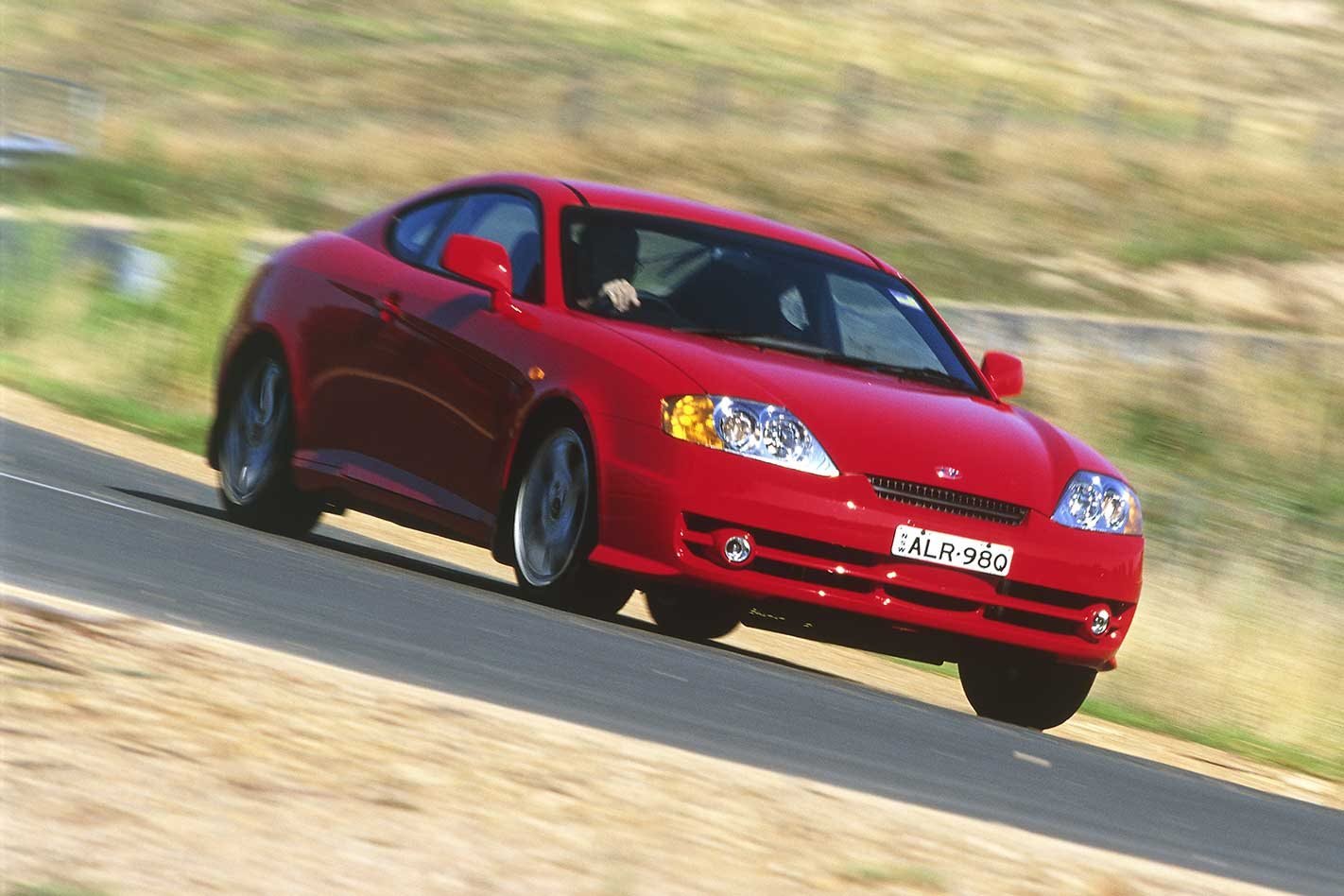Hyundai in MOTOR? Yep, indeed ’tis. But doesn’t Hyundai make boring little grocery-getters with sharp drive-away prices and not much else? And aren’t Hyundai showrooms full of track-suit-wearing pensioners all looking for their terminal car?
This feature was originally published in MOTOR’s May 2005 issue
Yep, but those popular views about what Hyundai is and what it makes ignore the fact that within about four years of the brand launching here (in 1986) there was an alleged sporty model in the local Hyundai line-up.
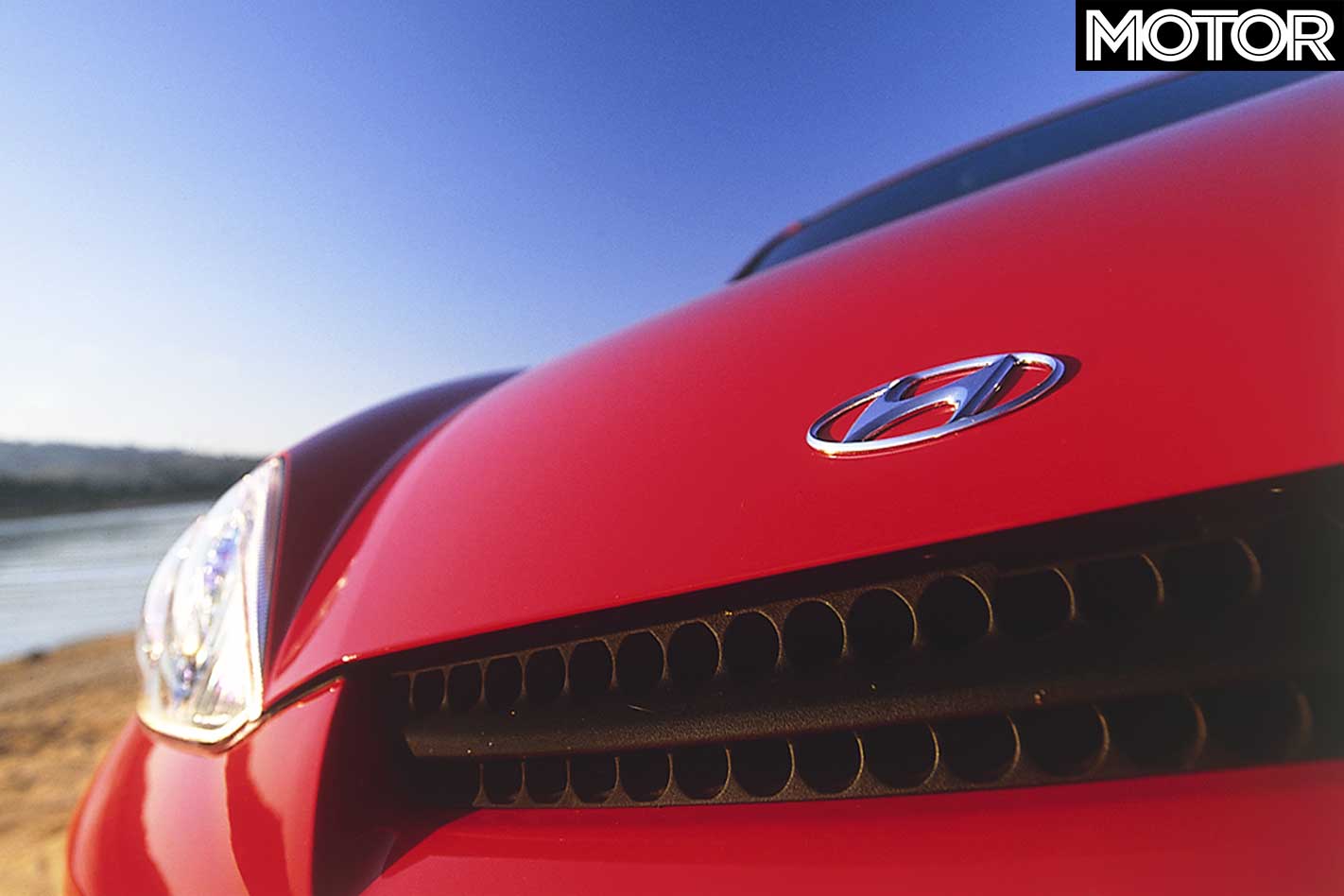
The blown S Coupe lasted until the mid-90s when its flimsy little carcass was replaced by another, bigger two-door by the name of Coupe SX. This time, Hyundai’s track-weapon (stay with me) ran a 1.8-litre four-banger with DOHC and four-valves per pot (the S Coupe was a three-valver).
There was also a version called the Coupe SFX which got a 2.0-litre mill and the whole plot went through a facelift or two to emerge as the goggle-eyed bloke we know and, largely, ignored.
The model petered out in 2002 and at that time, Hyundai gave us the most serious performance coupe we’d ever seen from any South Korean car-maker. Called Tiburon (it’s Swahili – or something – for shark) the new car was bigger, more aggressively styled and – yes, dammit – sportier than anything that had gone before it.
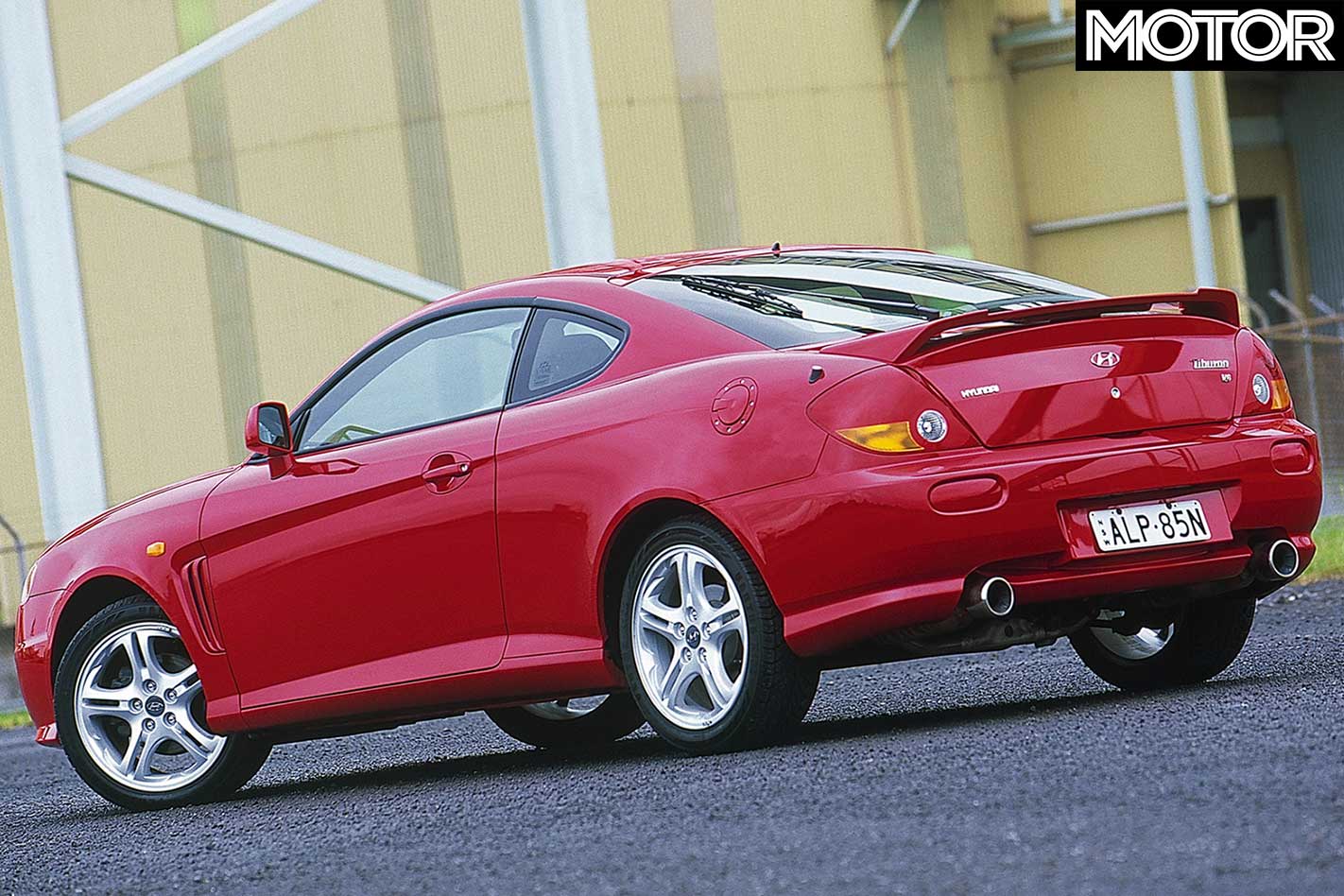
Significantly, it was also available with a V6 engine and a six-speed manual gearbox. Did this, however, suddenly mean Aussie performance-car pervs were suddenly switching on to the whole Hyundai thing? Er, no, actually, and while the Tiburon deserved to be taken at least a little seriously, it managed to sink without a trace.
Well, the unloved, and under powered four-cylinder version did, last year in fact, while the V6 is still selling brand-new – and has just undergone a minor mid-life facelift. It’s just that not too many folks out there seem to be handing over the readies. And that’s despite the price of the V6 Tiburon falling from a you’ve-got-to-be-kidding $41,880 in 2002 to its current $32,990 (in V6 manual form).
So why’s it such a showroom stalemate? Well, you need to look at the whole mid-sized coupe market to find the real answer. See, it isn’t just the Tiburon that has flopped in the sales race over the last 10 or 15 years.
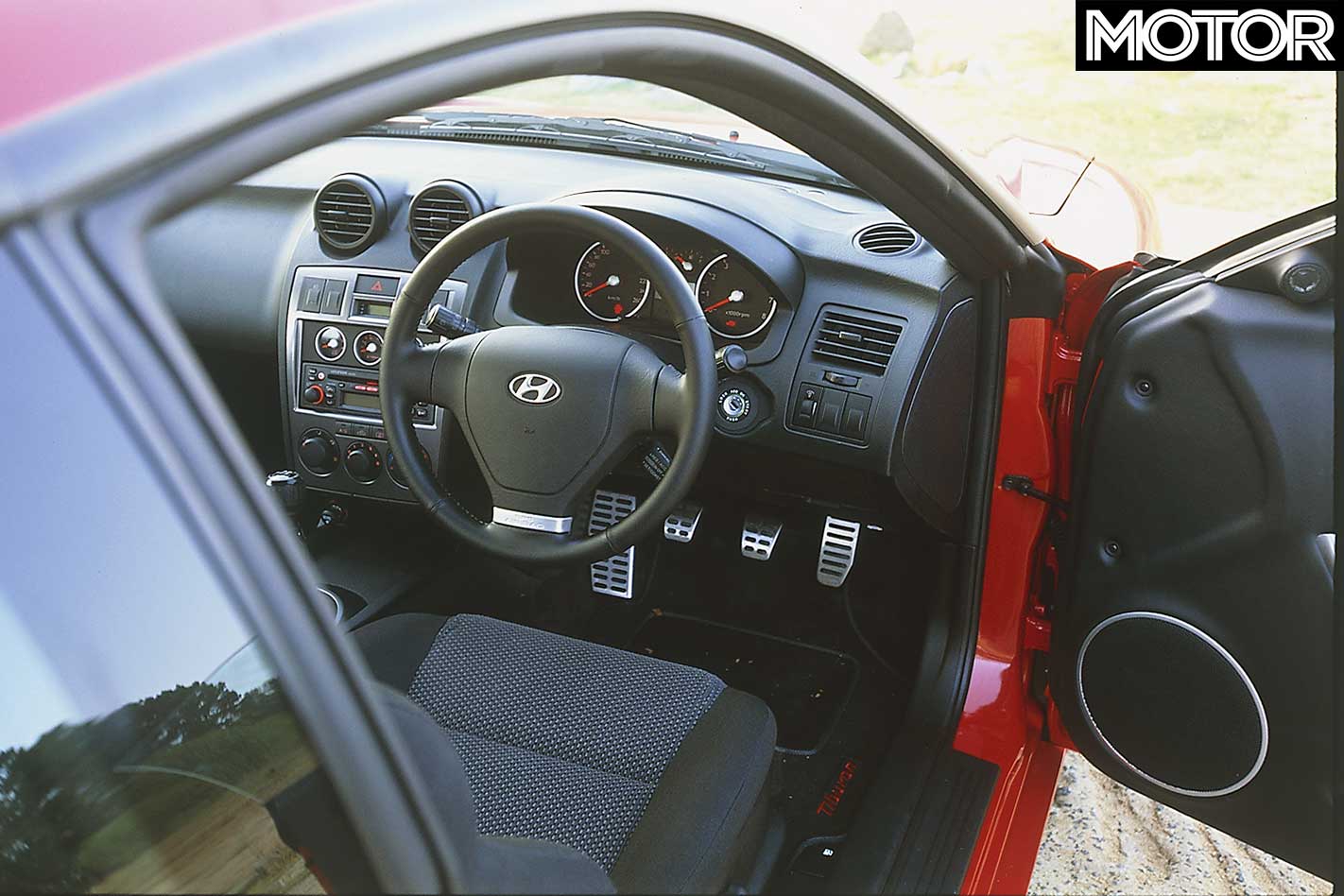
We’ve seen the Holden Calibra, Ford Probe and Cougar, Mazda MX-6 and others all fall on their shapely little butts. And they weren’t bad cars. They were available with V6 engines and they were tidy handlers with good spec levels. But two main things have worked against them: Stand up Toyota Celica and the now defunct Honda Prelude.
Without wishing to oversimplify things, it would appear that the buyers of such coupes are two things: possessed of a pack mentality, and; dimwits.
Okay, so the Prelude has always been a bit edgy, but the Celica – bar the current model – has for many years been a limp-dick special with Camry engines and Camry handling. But oh how we bought the things. In fact, anybody else who has ever tried to launch a competitor to the dyslexic duo have found to their cost that the market is pretty well wrapped up.
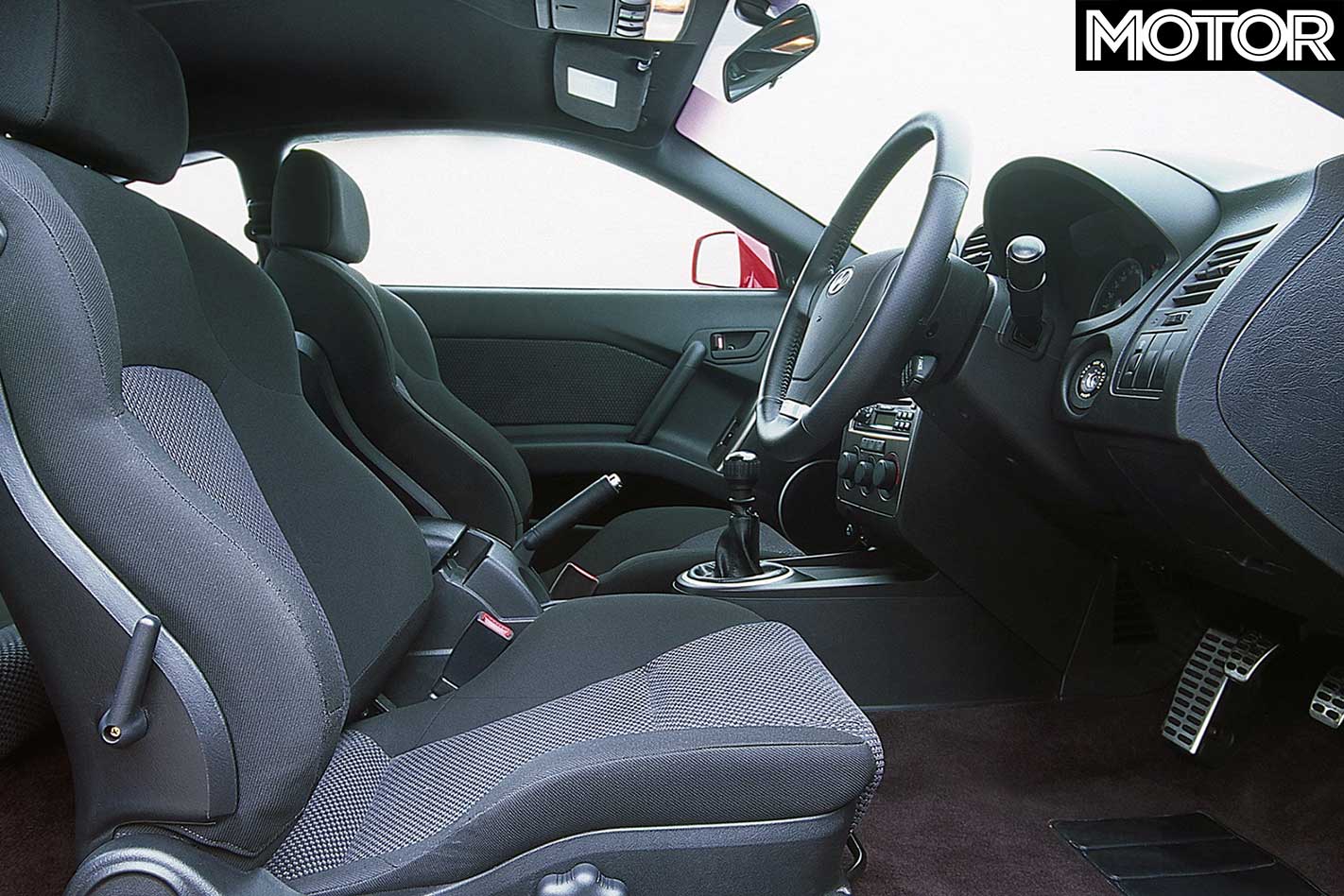
But what was the Tiburon really like? Did it deserve to attract an audience and, more importantly, is it a viable second-hand way into a swoopy coupe? Well, given the importance potential buyers place on the appearance of a personal coupe, the Tiburon was, from some angles at least, a bit of a long shot.
The car’s most ungainly angle is probably from dead ahead where the pert little grille and slightly-startled headlights are at odds with the under-bumper grille complete with fog-lights. Round the back, it’s a cleaner look with a smooth overall shape and big, twin tailpipes to set the pulse a-racing.
From the side, things get a bit more derivative with very Mustang-like indents in the flanks and those big orange indicator lenses also look like they were pinched from the previous-Mustang. But the overall proportions bear at least a passing resemblance to the – shock, horror – Ferrari 456.
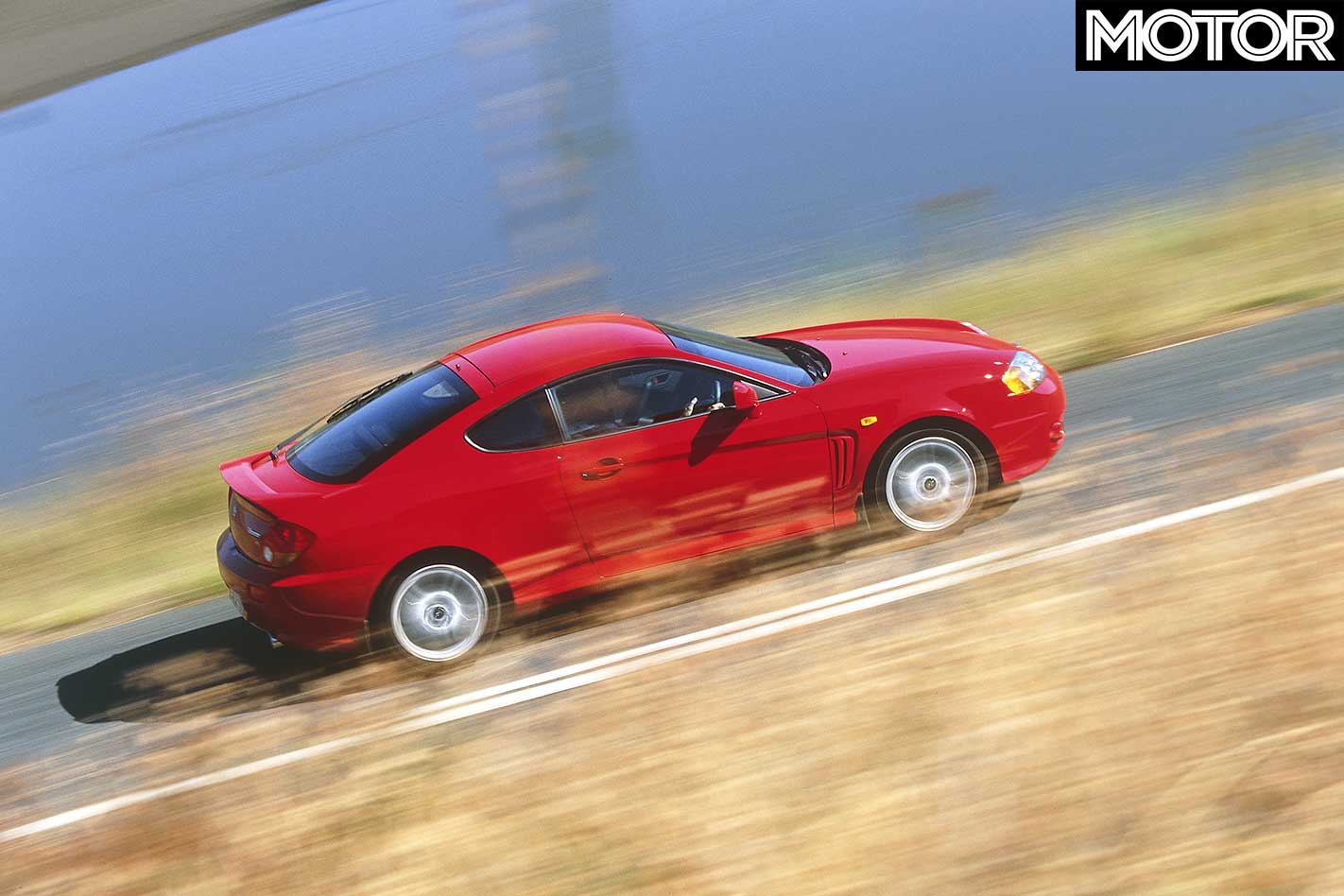
Okay, okay, it’s a looooong bow to draw, but the short rear overhang, long nose and general window line all suggest something from the Maranello region rather than the Dickensian shipyards of Pusan in South Korea. Chassis-wise, the Tiburon was better than most people expected. Like a lot of cars, however, it relied on tyre grip rather than huge reserves of natural talent.
Push it too far, and it’d start to understeer, gradually at first, but with determination towards the bitter end, although a quick lift off usually had the chassis back on your side.
For all that, though, the ride was pretty uncompromising and short, sharp bumps and craters quickly destroyed any notion that the Tiburon was a great piece of kit for less-than-perfect roads. Given some of the barges Korean engineers have lumbered us with in the past, maybe the Tib wasn’t as bad as all that, but it still smelled of having way too much spring and not enough sway-bar.
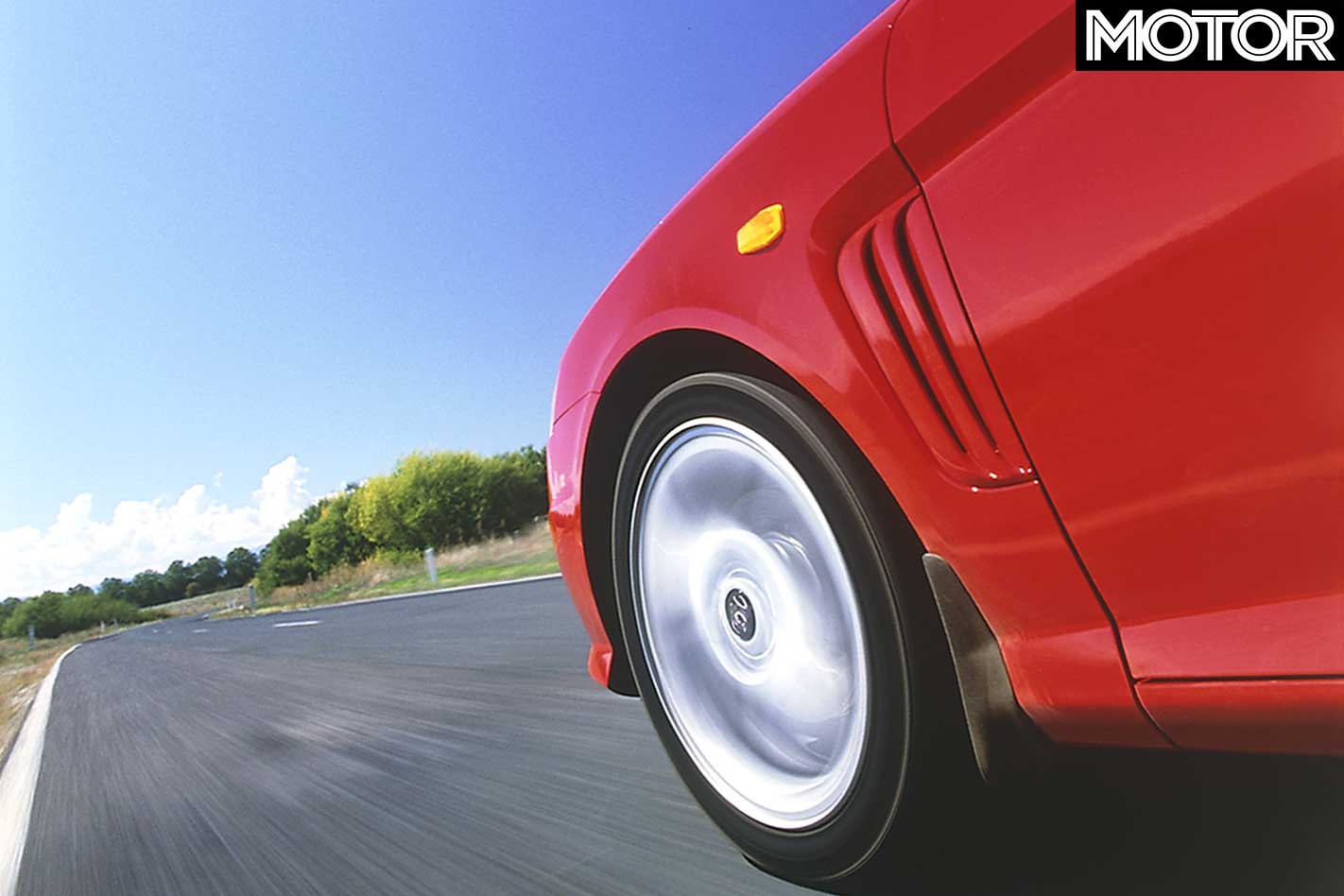
The brakes, too, were not without cause for criticism and as well as not having the outright bite most people would like, they were also operated by a very wooden pedal. Hyundai’s adaptive four-speed auto was available on both four-banger and V6 and while it works okay with the torquier six, it’s best avoided on the little ’un.
Either way, the six-speed is the way to go with four bottom ratios stacked pretty tight and the top two being overdriven for leggy freeway work. Only catch there is that the clutch lacks any real feel or feedback.
The V6 engine is not a bad thing and is light on the vibes and reasonably flexible. It’s not, however, one of those motors that makes you want to get up in the middle of the night and go for a blat for the sheer joy of it. The four-potter? Forget it.
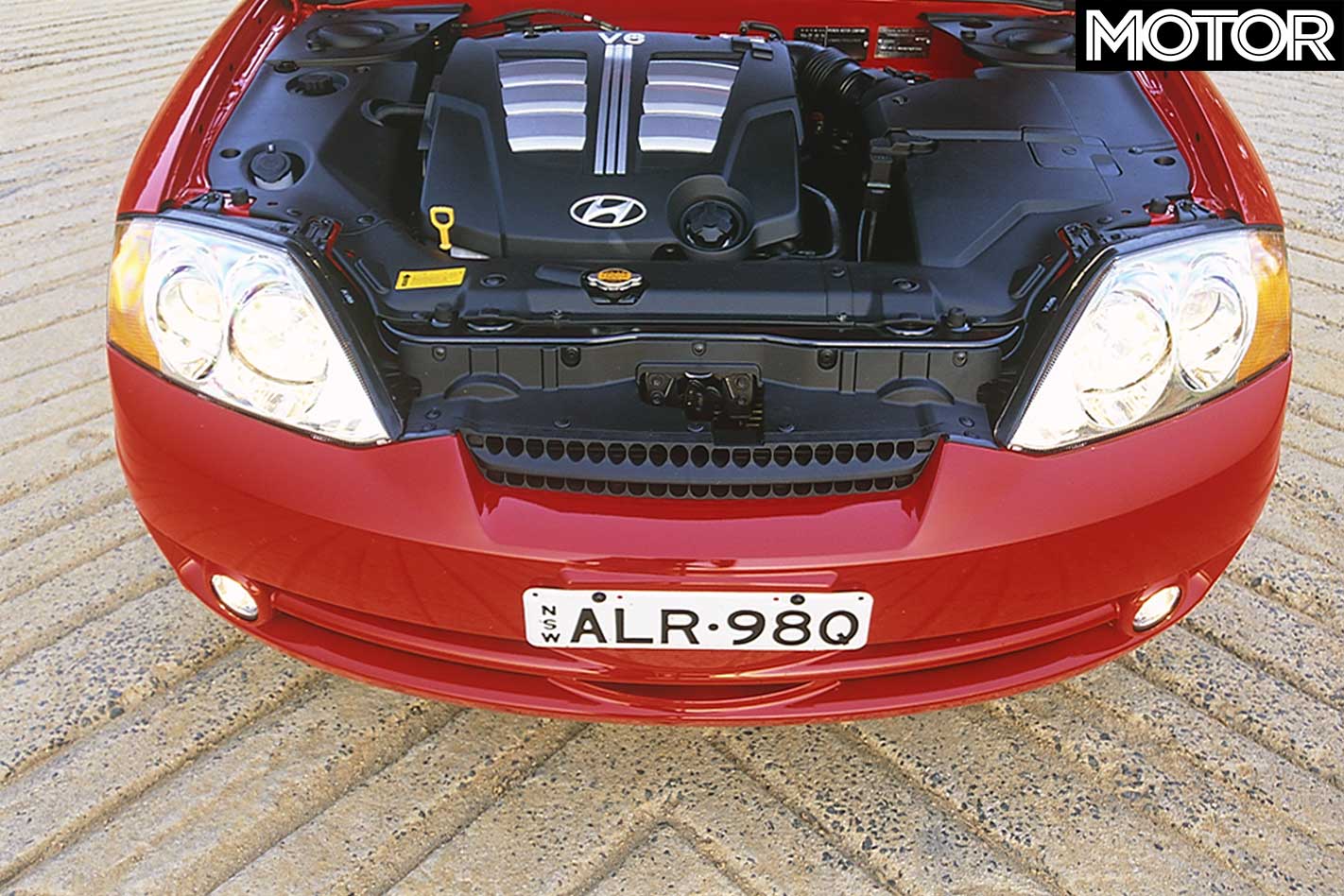
Getting more from a Tiburon is probably missing the point of the car. It’s an easy-to-drive contraption that offers nothing too confronting in the way of either maintenance or quirks. That said, a big-bore exhaust can add a little to the end result, although that’s mainly in terms of the noise it makes.
You could opt for a piggy-back computer and no doubt someone, somewhere makes a cold-air box for the thing. But honestly, you’d be better off adding a heavier rear sway-bar and the snottiest tyres you can find and try to dial out some of the understeer that’s part of the Tiburon experience.
The dead clutch and lifeless brakes you probably can’t do much about, all of which means the car is not for the hard-core maniacs out there. Watch out for Tiburons that look like they’ve been through the mill, because they probably have.
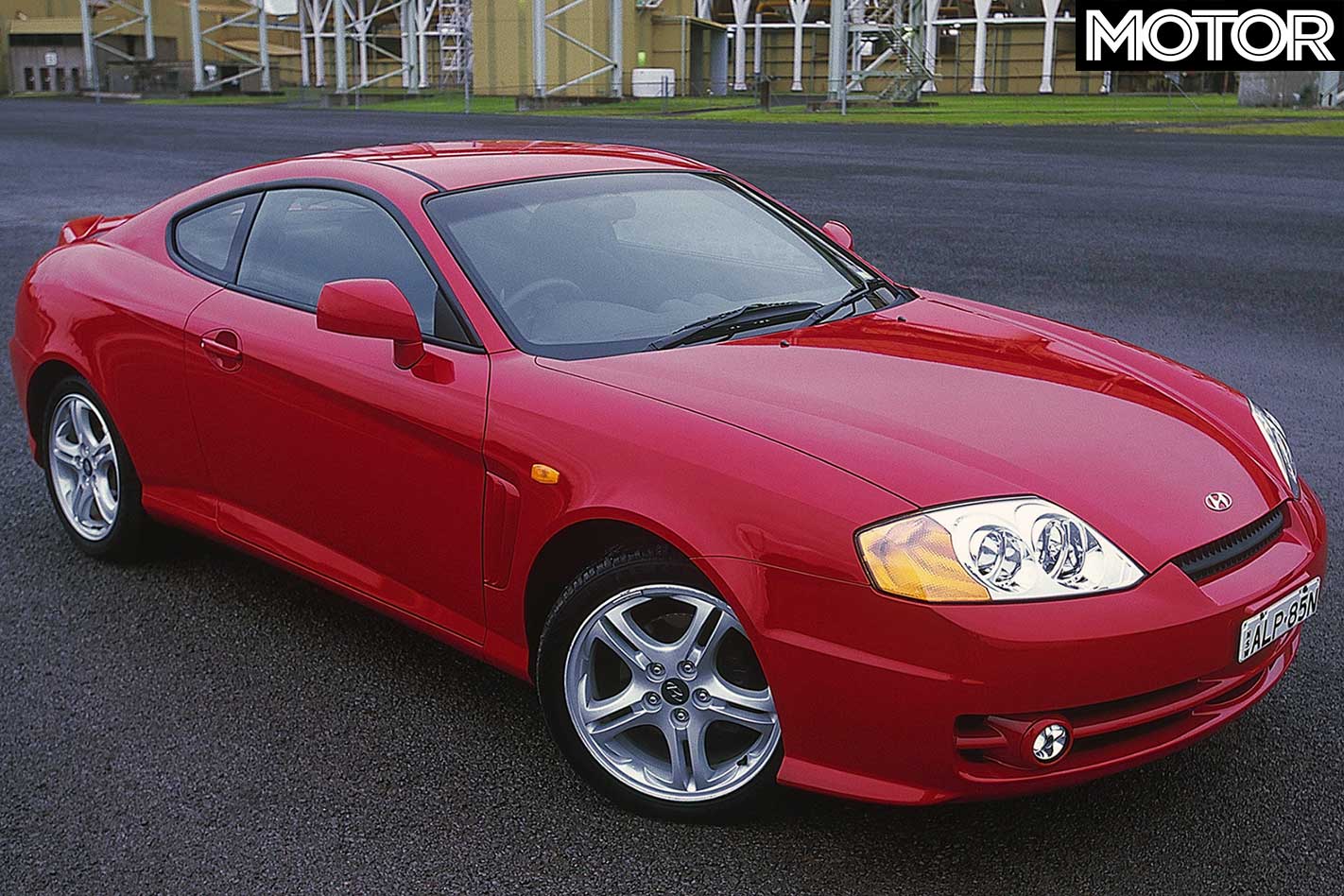
We haven’t heard of anything major cropping up as a persistent problem, so it’s really the basic service stuff that you need to check up on. Make sure the coolant is the right colour, the oil is clean and all the gears slot in easily and without expensive graunching noises. The clutch shouldn’t slip or shudder and any wobbling or shuddering through the tiller under brakes suggests warped rotors.
On the up-side, the average Tiburon probably won’t have been caned to death, so if it looks and feels okay, it probably is okay. Which is not something you could say about the average Nissan 200SX or Integra Type R, now is it?
FAST FACTS 2002 Hyundai Tiburon V6
BODY: 2-door coupe DRIVE: front-wheel ENGINE: 2.7-litre V6 DOHC, 24-valve POWER: 127kW @ 6000rpm TORQUE: 245Nm @ 4000rpm COMPRESSION: 10.0:1 BORE/STROKE: 86.7mm x 75.0mm WEIGHT: 1295kg POWER-TO-WEIGHT: 98kW/tonne TRANSMISSION: six-speed manual SUSPENSION: MacPherson struts, coil springs and anti-roll bar (f); multi-link, coil springs, anti-roll bar (r) L/W/h: 4395/1760/1330mm WHEELBASE: 2530mm TRACK: 1490mm (f & r) BRAKES: 280mm ventilated discs, single-piston calipers (f); 260mm solid discs, single-piston calipers (r) WHEELS: 17 x 7.0-inch (f & r) alloy TYRES: Kumho Ascent Supra, 215/45 ZR17 (f & r) FUEL: 55 litres, ULP PRICE: $41,880 (July 2002)
What we said?
“The barrel-chested V6 produces a deep snarly note under load. Unfortunately it also uses dead dinosaur essence quicker than the Arabs can dig it up. Over our 600km test loop, the Tiburon averaged a disturbingly high 17.1 litres/100km, proving our 22l/100km on the launch was not miscalculated. ” Jesse Taylor, July 2002

